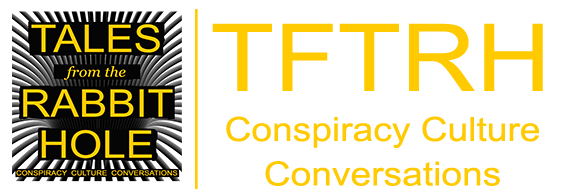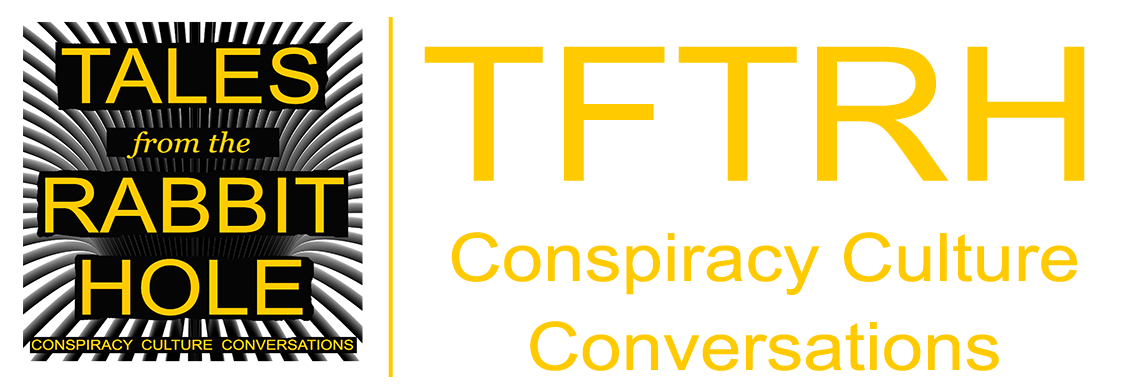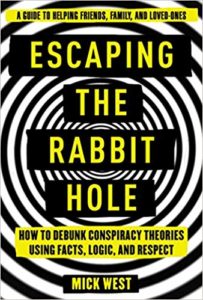![]() I met Sasha at the Flat Earth conference a couple of weeks ago. During the debate, she asked an interesting question about the moment that made us commit to the Earth being flat (or, in my case, a globe). Afterwards, she approached me and asked a few more questions, and we ended up talking for quite a while. I found her fascinating, as she was a very nice, normal-seeming, intelligent person. She’s certainly not stupid, and does not seem to be crazy, and yet she thinks there’s a good chance that the Earth actually is Flat. I tried explaining a few things to her, particularly the fact that distant mountains seem to be hidden behind the horizon just like the Globe model predicts. She didn’t think this was good evidence though, as there seemed to her to exist other possible explanations, like “perspective” hiding the bottom of the mountain. So was frustrated and intrigued. I invited here on my Podcast, and we have a fascinating conversation, where I again fail to get my explanation across, and she quite eloquently speaks about the need for both questioning of assumptions, and communication between diverse groups.
I met Sasha at the Flat Earth conference a couple of weeks ago. During the debate, she asked an interesting question about the moment that made us commit to the Earth being flat (or, in my case, a globe). Afterwards, she approached me and asked a few more questions, and we ended up talking for quite a while. I found her fascinating, as she was a very nice, normal-seeming, intelligent person. She’s certainly not stupid, and does not seem to be crazy, and yet she thinks there’s a good chance that the Earth actually is Flat. I tried explaining a few things to her, particularly the fact that distant mountains seem to be hidden behind the horizon just like the Globe model predicts. She didn’t think this was good evidence though, as there seemed to her to exist other possible explanations, like “perspective” hiding the bottom of the mountain. So was frustrated and intrigued. I invited here on my Podcast, and we have a fascinating conversation, where I again fail to get my explanation across, and she quite eloquently speaks about the need for both questioning of assumptions, and communication between diverse groups.
Podcast: Play in new window | Download
Subscribe: Apple Podcasts | Spotify | iHeartRadio | Email | TuneIn | RSS | More



Sasha seems nice, and the conversation was presumably pre-ordained to not cross certain lines in order to remain as respectful as possible, but even within that framework there were a few frustrating moments. Agree to disagree is a way out of a a discussion on what the marginal tax rate should be, not what the effects of the spinning earth are on the human body, which has one right answer — zero effect except slight weight difference depending on where you stand — and it is not arrived at by intuition or incredulity. The reason nobody studies the shape of the earth any more is because the question has been answered, and we have geoid solutions down to the millimetre resolution, and pictures from space, on top of the preponderance of evidence from dozens of fields of study, any single one of which is sufficient to prove the globe on its own.
Something else is going on here besides the inability to grasp the utterly scientifically uncontroversial shape of the earth. The phrase “what we’ve been told” is very common and I think is telling part of the story. “Being told” implies something so much more sinister than grade school science class, which, after all must “tell” students the state of human knowledge. Hopefully, “they” are also telling students how we know it is the shape it is, along with how we know whatever else we know, and about things we don’t quite know and are trying to find out. It seems to come back to conspiratorial thinking, and I think conspiratorial thinking is a mental illness that has different expressions, e.g. schizophrenia, paranoid personality disorder as some of the more extreme while things like flat earth and its ilk as variants that are nevertheless very damaging to the sufferer as well as to society.
One of the scientists in “Behind the Curve” believed it was due to a failure of science education. It may be, but I think there is an epidemic of conspiratorial ideation playing a bigger role, perhaps fostered by too much propaganda and lies in some of the media. If it is a failure of education, it is perhaps not in the failure to teach the science but a failure to teach epistemology, philosophy of science, real skepticism, and how to know sources of information are trustworthy.
Dear Mick,
With growing interest I have been listening to your podcast for a few weeks now. In the description above, like in the podcast itself, you have mentioned the word “frustrating”. Well, surprise, I have felt the same thing again listening to this episode today. I say “again”, since I felt the same listening to episode 4, the discussion with Stian Arnesen. I wondered why I felt this frustration. I believe I have found the answer.
The About section for this website mentions: “Tales from the Rabbit Hole is an interview-style podcast focusing on people whose lives have been affected by the conspiracy theory rabbit hole.” So the focus is/should be on the people. Yet, in mentioned episodes the discussion is on a specific theory for a large part. I know you know you will never be able to have guests create an open mind/change their ideas during a 1 hour show. No matter how solid your arguments are, it takes time for believers to open up to the idea they might be wrong about specific facts or to simply accept answers to some of their questions. As was demonstrated in this episode, to ignore is an easy way out and there simply isn’t enough time to deep dive into specific claims or arguments. Hence the frustration.
I personally would be very interested in your podcast focussing on the people and their believes and how it influences their lives. In addition I’d love to see you do a separate but connected podcast (or maybe specials) on specific claims in which you invite the biggest propagators of specific theories or claims and have them debate scientists or other subject matter experts where you would lead that discussion. Pretty sure any frustration would be reduced to a minimum that way :).
Looking forward to episode #9.
Best, Bruce
Use Flat Earth to develop your critical thinking skills. You should react and know real science is based on repeatable proofs. Modern science is built on assumptions on assumptions, not on repeatable proofs. Do some research on your own and find proofs you can do:
>You can go to the beach and see the ships go out of sight. We can only see so far without aid. If you then use your telescope or zoom lenses you will see the ship again and the waterline. Ask an observatory how long they can see the sun after sunset?
>A precision gyroscope will not recess because the earth is not turning, even after 6 hours of spinning, you will not see it. See YouTube “Flat Earth and the Gyroscope Myth” and “Flat Earth and the Gyroscope Challenge”
>Before a long trip calibrate your Level App on your phone to the floor and then compare that to the other airport floor. The earth is flat. See YouTube “4,519 MILES NO CURVE Globe Debunked Once And For All”. After calibration gravity is not considered. On a flat turning potter’s wheel press calibrate, then compare it when turntable is still.